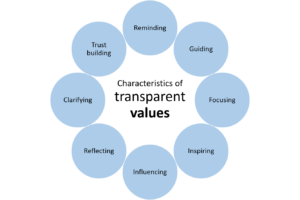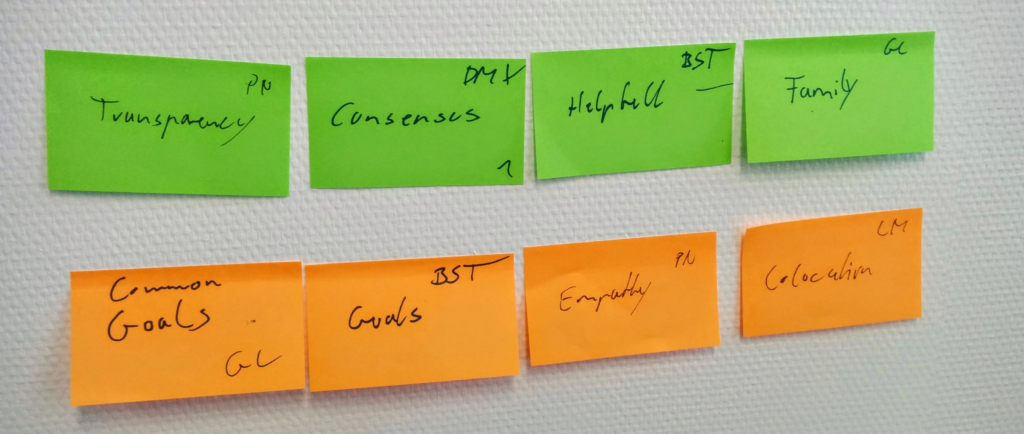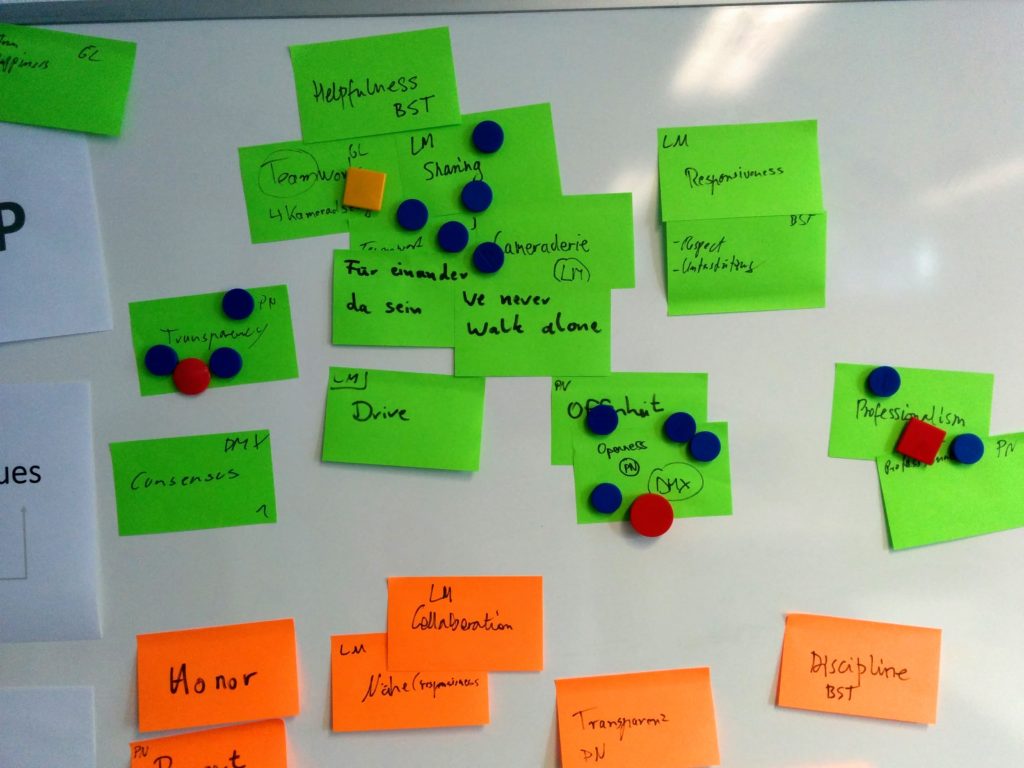by Florian Sauter
This piece offers a practical way to discover the common core values in your team and how to generate a conversation about them. It’s for everyone who wants his or her team to benefit from collaboratively discovering their own common values. It’s a journey that could be triggered by a team leader, manager or coach of any team in any business context. However, no matter what role you may be playing, don’t hesitate to take the first steps yourself!
The main goals of this blog post are to:
- share a common understanding of core values
- share the need and advantages of company core values
- share a way to get to know each other better while determining your own team values
In the end you should have a good understanding about what values are and why it’s important to have them.
What are company core values?
The term “value” can have different meanings. In our society we mostly connect it to the amount of money that can be received for something or how useful or important something is. However, if we look up the plural term “values” we find a more interesting meaning: “The beliefs people have, especially about what is right and wrong and what is most important in life, that control their behavior.” So values are something that gives us an idea about the right direction for our daily interactions. That makes this something useful (valuable), that you can also use to help define your team’s identity and purpose.
Making our core values visible helps to give us not only a better self-understanding, but also a better understanding of the actions we take. Keep in mind that making your values transparent is also a great tool for your company, your department or yourself. Each of these levels of purpose can have its own core values. Taking this one step further, we can also distinguish between core values and wish values. Core values are the virtues that are wired into our mindset or culture and lead to our natural behavior. They reflect “who you are”. This means, they are implied through and reflect our daily actions, but are not directly expressed by us. Beside the “who you are” it’s also interesting to discover “who you would become”. These values are called wish values and reflect our aspirational values which complement our core values.
As an example of values we can use the well known Scrum values:
- focus
- openness
- commitment
- courage
- respect
As a team member of a Scrum team we have to respect the values and commit ourselves to them. We commit to focusing on “What is important now?” and we commit ourselves to respect and not to waste the money of our sponsors and so on. If we ask ourselves: “Should I make our metrics immediately transparent for our management, even if they show us that our progress is too slow? Or should I wait for the next review?” then we can utilize the values of courage and openness to get us on the right track.
Of course there are more values. If we just browse the web or have a look at Jurgen Appelo’s Value Stories & Culture Books, we can find plenty of example of values. A word of caution – just be careful that your mind is not biased and narrowed down by an example list. Try to start with a very thorough list of values and see what emerges.
Learn more about the Values & Culture Module.
Why do transparent values help us?
Now, we have an idea of what values are, let’s better understand what they can be used for. What is the advantage of pinning them up on a wall so everybody can see them? What is the benefit of identifying the values that reflect our actions in the past? It’s not only about helping us to take the right decision. Here are further advantages of transparent values applicable to ourselves, our team, our department or our organization:
Characteristics of Company Core Values

- Reminding: A value can be a reminder of how to act in a given situation.
- Guiding: Values are like a compass and allow us to make decisions more easily within our current activity.
- Focusing: Values help us to keep the focus on what is important right now.
- Inspiring: A value can be an inspiring purpose for our whole company, department or team.
- Influencing: Clear values can influence our behavior at work and can be a force behind our motivation, commitment and productivity.
- Reflecting: Values are part of our identity. In the case of a company they are part of your culture. It’s how our customers recognize you.
- Clarifying: In a team or larger group context, the visualization of core values can invite discussion and reveal different points of view.
- Team building & trust building: Clarification of values for each individual can give us a better sense of and insight into our colleagues and therefore change the way we interact.
Once established, the fact that we stand as a team for our values is an especially important lever for every business. If you want to create a high quality product and sell it with your promise, you need to hold our value flag of “professionalism” or “focus on quality” up high, for your company, your department, your team. Your customers will recognize–or at least subconsciously perceive–if the values you are representing outwardly are also those you are reflecting in our actions and they will rate you accordingly. Wouldn’t it therefore be useful to know through your values who you are (core values) and who you would like to become (wish values)? That’s exactly the point where transparent values help you.
Team or Company Core Values Workshop
The question now is how can you determine common values for your own team? In our company, NovaTec Consulting GmbH, we were able to determine team values by applying the following steps. You can either dedicate a retrospective for this workshop, or separate the single steps into several workshops (or a combination). This depends on the maturity of the team. In our experience you should invest at least four hours for a single workshop.
Try this exercise with three to nine team members. But, keep in mind, with some small adaptations relating to the participants, preparation and timeboxes, it could also be your company, your department or simply yourself.
Considerations before starting your values workshop
There are no real “prerequisites,” only considerations. Depending on the maturity of your team you will end up with differing views on values. A team that has only worked together for two weeks will not be able to achieve the same qualitative values as a team that has worked together for more than a year. It’s all about trust, openness and common experiences. With a newly formed team, you should first focus on wish values, inspect these in a later retrospective and decide whether you have achieved these values. If so then these can be accepted as your first core values.





